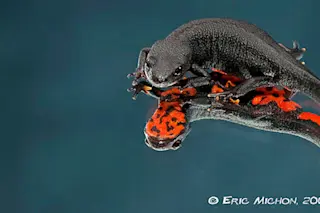Gouge out my eyes, and I would be permanently blind. Cut off my limbs, and I would flop on the ground (although, I’d try to bite your legs off). But a newt would have no such problems. These small creatures are masters of regeneration. If they lose a limb, they grow new ones in a few months. They can regenerate parts of their tails, jaws, ears, hearts, spines, eyes and brains.
Now, Goro Eguchi has shown that a newt’s healing powers don’t diminish with age. As long as they live, they retain the ability to efficiently regrow their body parts (or at least, the lenses of their eyes), even if they have to do so over and over again.
We’ve known about the abilities of newts and other salamanders for over 200 years, thanks initially to Lazzarro Spallanzini, an Italian biologist and Catholic priest. But the limits of this ability ...














